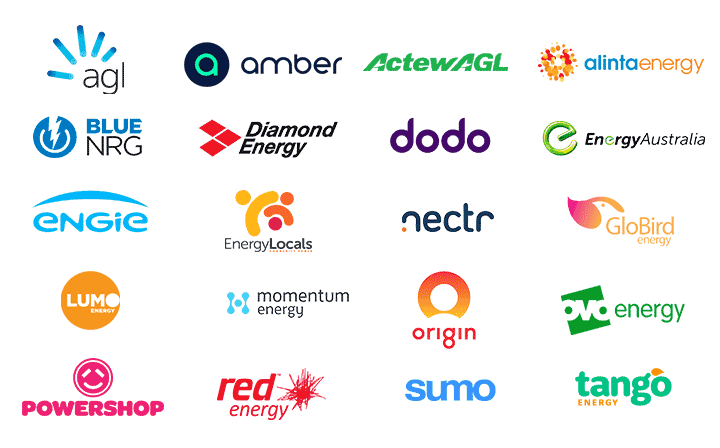
Looking for the cheapest electricity in the Evoenergy network in the ACT? If you live in the Australian Capital Territory, you’ve come to the right place to find the cheapest electricity. The tables below rank the cheapest offers from all retailers in the Evoenergy network. This information is updated each weekday.
How much could you save by switching?
Here’s how to find the best electricity deal for your place
Get a personalised cost ranking of every retailer’s publicly-listed electricity plans based on your unique energy use. If you are a small or big energy user, or perhaps you have solar, a battery or an EV, then WATTever’s comprehensive comparison will help you find the cheapest deals for your home. We include all retailers, tariff types, discounts, solar feed-in tariffs, input for concessions and more to help you make serious savings on energy. Start your online comparison here.Cheapest Anytime electricity rates by retailer in the Evoenergy network (ACT)
Cheapest Time Of Use electricity rates by retailer in the Evoenergy network (ACT)
Cheapest Anytime Demand electricity rates by retailer in the Evoenergy network (ACT)
Cheapest Time Of Use Demand electricity rates by retailer in the Evoenergy network (ACT)
Rates shown include GST and all available discounts.
Plan rates are variable and future rates may be subject to change by the Retailer - except where plan rates are stated as fixed in the Basic Plan Information Documents/Energy Price Fact Sheet.
Plans are updated each weekday from the Retailer's Basic Plan Information Documents/Energy Price Fact Sheets (except plans for WA and NT).
^Daily Charge includes the daily supply charge and the per day value of recurring fees or credits (eg. membership fees, monthly bill credits etc).
*Reference Price refers to the unconditional discount off the yearly cost of the Default Market Offer (DMO) for NSW, QLD and SA, Victorian Default Offer (VDO), ActewAGL Standing offer for ACT or Aurora Regulated Offer for TAS, for a household on a flat rate tariff without controlled load. Discount is calculated based on annual usage in each state/network area of 7,722kWh (ACT), 3,900kWh (NSW-Ausgrid), 4,900kWh (NSW-Endeavour), 4,600kWh (NSW-Essential), 4,600kWh (QLD-Energex), 4,000 (SA), 4,000kWh (VIC) and 9,475kWh (TAS) AER benchmark. Energy Regulators require the DMO and VDO Reference Price to be displayed, however it does not take into account solar export nor a property's actual annual usage or when that usage occurs (for Time Of Use plans).
Cost/Year estimate shown is for the first year and includes all conditional discounts plus the value of exclusive benefits available when switching through wattever.com.au such as Prezzee eGift cards from WATTever and additional upfront/recurring credits from partner retailers. See plan details for more information. Your bill will vary based on actual usage.
For plans with a demand tariff, the annual cost estimate calculated by WATTever includes a demand charge that assumes a peak demand of 25% of the daily benchmark electricity consumption.
Time of Use hours displayed are the periods published by each network. Individual retailers may offer different time of use hours - please review the plan BPID/Fact Sheet.
ActewAGL offers electricity plans in a small number of postcodes in the Endeavour Energy and Essential Energy networks. Please refer to the ActewAGL rates page for their plans.

2025-26 DMO electricity price rise
Power price changes are just around the corner. Here’s the rundown on the 2025-26 Default Market Offer (DMO) electricity price and what it means for energy bills from July.

Cheaper Home Battery Program set to boom
The Federal government’s new $2.3 billion Cheaper Home Batteries Program offers a generous battery discount for Aussie households and small businesses.

2025-26 Victorian Default Offer electricity price announced
Victoria’s Essential Service Commission (ESC) has released its final determination for the 2025–26 Victorian Default Offer electricity price (VDO). The good news is there will be very little change to electricity prices from July 1



